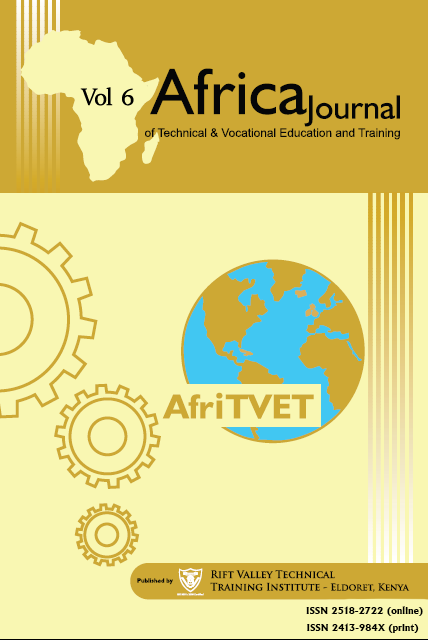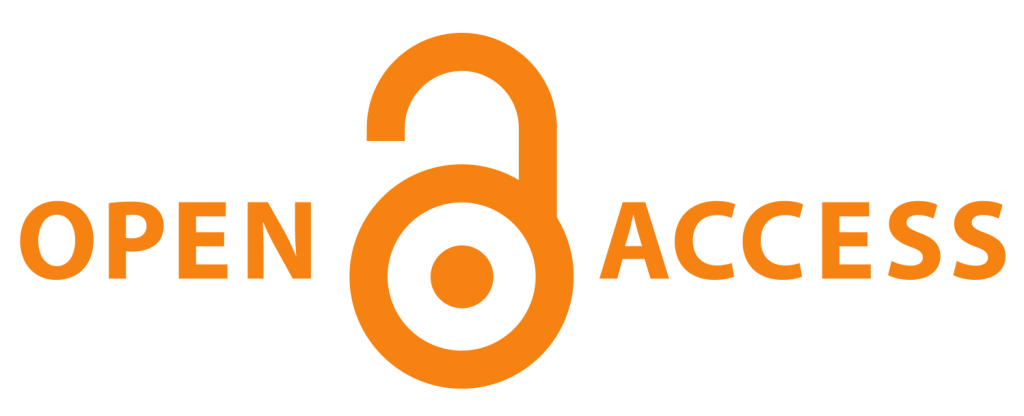Active Learning in Institutions of Higher Learning
Abstract
In this era of improved technology and internet connectivity, learners in institutions of higher learning are bound to be affected both positively and negatively in terms of knowledge acquisition. For instance, on the positive aspect, they are able to interact with learning materials from all over the world and other learners within a very short period of time. Contrary to this, if the instructor does not engage the learners, he/she is bound to lose them because they drift away from the lesson and engage with peers and other activities through the use of their smart phones. Also, they may fail to attend the said lectures simply because in most cases, they are usually left out in the learning process as they do not assume an active role. Hence, this paper focuses on the use of active learning in higher learning institutions where it adopted a review of existing literature. Some fundamental elements used together with this approach include cooperative, collaborative and problem-based learning. Specifically, active learning has been defined giving relevant examples; theoretic foundation used on active learning, the importance of using active learning, active learning strategies/techniques and finally, the challenges of using active learning in institutions of higher learning. To be able to attain students learning outcomes (SLO) within the higher learning institutions, instructors (lecturers) should incorporate the use of active learning approaches which have a capability of making the learning process fruitful.
Article Views and Downloands Counter
References
Ambrose, S.A., Bridges, M.W., DiPietro, M., Lovett, M.C., Norman, M.K., and Mayer, R.E. (2010). How learning works: seven research-based principles for smart
teaching San Francisco: Jossey-Bass
Bonwell, C. C., & Eison, J. A. (1991). Active learning: Creating excitement in the classroom.ASHE-ERIC Higher Education Report No. 1. Washington, DC. Brame, C. J. (2016). Active learning. Vanderbilt University Center for Teaching.
Bransford, J.D., Brown, A.L., and Cocking, R.R. (Eds.) (1999). How people learn: Brain, mind, experience, and school. Washington, D.C.: National Academy Press.
Braxton, J.M., Milem, J. F., & Sullivan, A. S. (2000). The influence of Active Leaming on the college student departure process toward a revision of Tinto's theory. Journal ofHigher Education, 71(5), 569-590.
Fayombo, G. A (2012). Active Leaming Strategies and Student Leaming Outcomes Among some University Students in Barbados. Journal ofEducational and Social Research 2(9) 79-90.
Felder, R. M. and Brent, R. (2009). Active Leaming an Introduction. ASQ Higher Education Brief, 2(4)
Haak, D.C., HilleRisLambers, J., Pitre, E., & Freeman, S. (2011). Increased Structure and Active Leaming Reduce the Achievement gap in Introductory Biology. Science, 332, 1213-1216.
Handelsman, J., Miller, S., & Pfund, C. (2007). Scientific teaching. New York: W.H. Freeman.
Jourdan Jr, L. F., Haberland, C., & Deis, M. H. (2004). Quality in higher education: The student's role. Academy of Educational Leadership Journal, 8(2), 17.
Kennedy, D. (2006). Writing and using learning outcomes: a practical guide, Cork, University College Cork
Koohang, A., Paliszkiewicz, J., Goluchowski, J., & Nord, J. H. (2016). Active learning for knowledge construction in e-leaming: A replication study. The Journal of Computer Information Systems, 56(3), 238-243.
Lorenzo, M., Crouch, C.H., & Mazur, E. (2006). Reducing the gender gap in the physics classroom. American Journal ofPhysics, 74, 118-122. for knowledge construction in e-leaming: A replication study. The journal of Computer Information System
Morrison, T. (2004). Promoting Active Leaming in University Classes. The Hong Kong Polytechnic university.
Paulson, D.R. & Faust, J.L. (2010). Techniques of Active Leaming. California State University.
Peko, A., & Varga, R. (2014). Active Leaming in Classrooms.
Prince, M. J. (2004). "Does Active Leaming Work? A Review of the Research" Journal ofEngineering Education, 93(3), 223-231.
Republic of Kenya (2017). Basic Education Curriculum Framework. Kenya Institute of Curriculum Development.
Robertson, L. (2018). Active Learning Strategies in Higher Education: Teachingfor Leadership, Innovation, and Creativity. A Theoretical Background: Toward an Epistemology of Active Leaming in Higher Education and Its Promise, 17-44
Ruiz-Primo, M.A., Briggs, D., Iverson, H., Talbot, R., & Shepard, L.A. (2011). Impact of undergraduate science course innovations on learning. Science, 331, 1269-1270.
Simons, P. (1997). Definitions and Theories of Active Leaming. In D. Stem & G. Huber (Eds.), Active Learningfor Students and Teachers: Reports from Eight Countries, 19-39. Frankfurt & New York: Peter Lang.
Copyright (c) 2021 Africa Journal of Technical and Vocational Education and Training

This work is licensed under a Creative Commons Attribution-NonCommercial-ShareAlike 4.0 International License.
Copyright Notice Copyright of published articles is held by AfriTVET. No limitation will be placed on the personal freedom of authors to copy or to use in subsequent work, material contained in their papers. Please contact the Publisher for clarification if you are unsure of the use of copyright material. Apart from fair dealing for the purposes of research and private study, or criticism and or review, this publication may only be reproduced, stored or transmitted, in any form or by any means, with the prior permission in writing of the Publishers.


